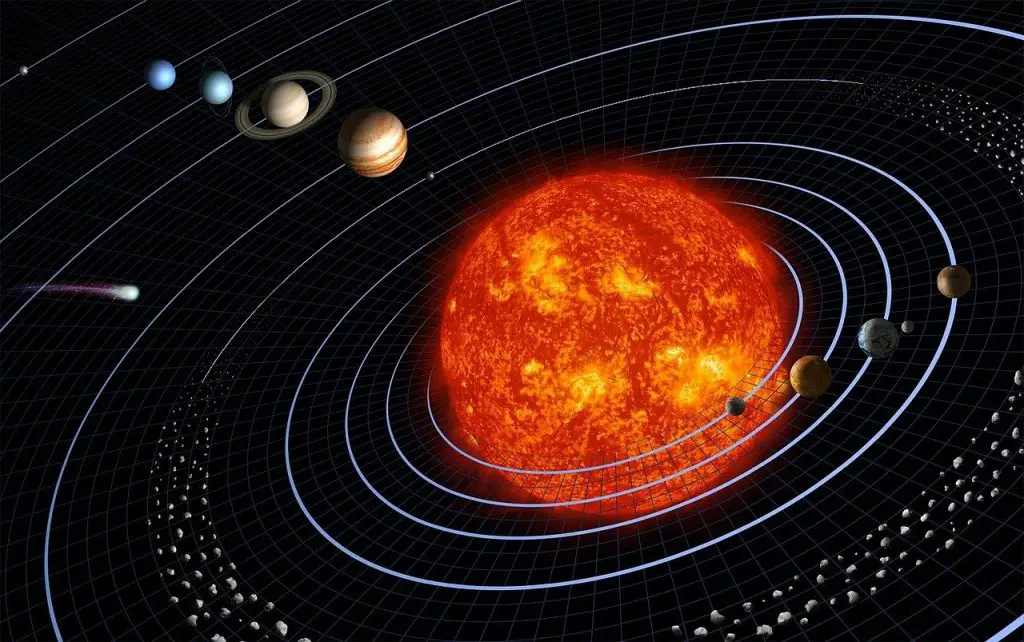As NASA is working toward establishing a permanent human presence on the moon, the space agency must know the best spot with lunar water on the moon’s surface. To help NASA reach its goal of discovering lunar water, a team of scientists studied the data obtained from retired NASA’s Stratospheric Observatory for Infrared Astronomy (SOFIA) to create the first detailed map of water distribution across the lunar surface. How did the scientists come up with this study and how will it benefit future crewed missions to the moon? Continue reading to find out.
How the Scientists came up with this new study
The scientists made this discovery using the data they obtained from the SOFIA telescope to compile the lunar water mapping. NASA’s SOFIA telescope commenced operation in 2010. However, NASA retired the observatory in late 2022 because of budget-related issues. During its operation period, the telescope was mounted aboard a Boeing 747 which would fly to an altitude of about 42,000 ft (12,800m).
At this altitude, the observatory was flying about 99.9 percent of water vapor. Keep in mind that water vapor would have blocked the infrared light captured by the telescope. Since its retirement in late 2022, scientists have been exploring the data obtained by the observatory during its operation season. After studying the data for a while, the researchers compiled the new lunar water map. Surprisingly, the newly compiled map covers about one-quarter of the Earth-facing side of the moon below 60-degree latitude.
This new map also includes the lunar south pole. The uniqueness and great detail of the new lunar map amazed the scientists. Bill Reach who is the director of the SOFIA Science Center at NASA’s Ames Research Center in California’s Silicon Valley and lead author on the study shared his view about the latest moon water data they compiled.
“When looking at the water data, we can actually see crater rims, we see the individual mountains, and we can even see differences between the day and night sides of the mountains, thanks to the higher concentration of water in these places,” Bill Reach explained in a NASA blog post.
What You Should know about lunar Water Distribution across the moon
The scientists used the SOFIA data obtained on February 2022 in tracing molecular water. This molecular water covers about ¼ of the lunar nearside surface south of about −60° latitude with a 5 km resolution. The data also reveals that the water strength differs depending on the region across the lunar south pole.
This variation ranges from the dryness experienced at +28° longitude to more wet (170 ppm) at −7° longitude. Scientists also discovered that the water strength decreases towards the pole. They carefully used the SOFIA telescope data in mapping out the amount of water distribution across the lunar surface.
Scientists used the new data to understand how water spreads out to a specific region of the lunar surface including cold areas where sunlight does not reach. The researchers published their new study in the Planetary Science Journal, detailing a new insight into how water spread across the lunar surface. NASA is currently preparing for its Artemis crewed missions in 2025. This implies that the space agency will depend on this lunar water map in extracting water from the moon.
How this lunar water map will be beneficial to future crewed missions to the moon
NASA hopes to land its Artemis crew on the lunar south pole in 2025 and 2027. Since the lunar map also covers this region, NASA astronauts will easily use the data it provides to source water on the moon. The space agency is working to send Volatiles Investigating Polar Exploration Rover (VIPER) to the lunar surface in 2024 to conduct lunar resource mapping.
This sophisticated rover will take advantage of the latest SOFIA map as a guide to succeeding in its mission. The VIPER rover will unlock several potentials that will enable NASA to succeed in future crewed missions to the moon. NASA hopes to establish a permanent human presence on the moon before the end of this decade. Hence, the agency will use its success on the moon in accomplishing its manned mission to Mars in the future.
Since water is essential for human survival, NASA will heavily rely on the new SOFIA map to find water on the moon. Water on the lunar surface is also essential as it can be converted into oxygen for breathing and propelling a rocket.
Conclusion
The new map provided by scientists will guide future NASA missions in sourcing water on the lunar surface. Maybe, humans will use sophisticated technologies in extracting water someday on the moon. What do you think about this latest discovery?




